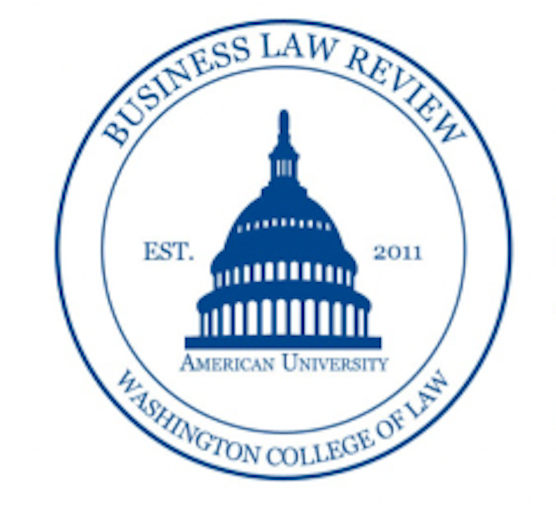
By: Richard Bomberger
Cryptocurrency has lured many people into buying assets as a speculative investment with the possibility of a massive return. Behind this speculative market, there is a massive underbelly of shadowy illicit networks. The Department of Justice recently filed a civil complaint against North Korean actors that stole millions of dollars worth of cryptocurrency.[1] The North Korean actors sophisticatedly laundered the money through Chinese over-the-counter crypto traders.[2] Over-the-counter crypto traders are traders that do not use normal exchange-based trades and instead use a direct to buyer approach.[3] An example of over-the-counter traders would be a small family business like a coffee shop. This use of over-the-counter trades keeps as much anonymity as possible to the seller.[4] Through this scheme the hackers were able to steal and hide roughly $250 million in cryptocurrency. What is particularly hard about tracing over-the-counter traders is that many of them are legitimate businesses who are accepting cryptocurrency for the services they offer and thus are not traditionally suspects of illicit networking.[5]
The North Korean hack shows a concerning ability to launder large amounts of money with a large degree of anonymity. In 2019 alone, criminals laundered $2.9 billion dollars, mostly through exchanges known collectively as the “rouge 100.”[6] Cryptocurrency is still in its infancy, so the amount of laundered money is likely to skyrocket as traditional money markets are more heavily regulated. Funds will generally start in the illicit broker’s wallet and then move to an intermediary account.[7] From the intermediary account, the cryptocurrency is then moved to the over-the-counter traders and then exchanged into cash.[8] The rouge 100 is different from the bigger exchanges in that they do not have strict “know your customer” policies in place.[9] What this likely fails to capture is the large amount of money that is being laundered through crypto currency without the use of exchanges. Cryptocurrency offers an easier way for criminals to launder money because of the anonymity and lack of regulation compared to trying to launder money through conventional banks.[10] The ability to be anonymous while conducting massive amounts of transactions, and additionally the lack of reporting, can mean not being detected by the government. For example, through the Bank Secrecy Act banks are required to report information about transactions that meet a certain threshold.[11] But with the rise of crypto wallets and hardware wallets, “the bank” is essentially the owner of the asset.[12] This leaves the government mostly in the dark; it can only really view the public transactions, not who is behind the crypto trades.
While in the past the government has relied on Bank Secrecy Act reporting to track money laundering, now an individual could theoretically move crypto assets in between hundreds of intermediary accounts over the span of a few hours, and it would be impractical to use old technology to track and trace crypto money laundering.[13]
There is likely a two-track system of what should happen in this area to crack down on cryptocurrency money laundering. The first track should implement machine learning and artificial intelligence (“AI”) to identify connections between all of the transactions so that the movement of crypto assets can be traced effectively and efficiently. The use of AI and machine learning is done through a few specific techniques. The first major technique is called “network modeling,” which traces where money is dispersed.[14] The second technique is called “clustering,” which finds groupings of transactions to identify money laundering.[15] The third technique is called a “time series on graphs,” which ties a central active node in an activity of money movements to peripheral nodes.[16]
The second track should involve Congress adopting new legislation that gives guidance on how the Bank Secrecy Act applies to owners of crypto currency accounts. Because cryptocurrency owners are currently not subject to the Bank Secrecy Act, it means that people can essentially use a cryptocurrency wallet affectively with an openness to their real identity. All exchanges should adopt anti-money laundering efforts as the Bank Secrecy Act states to minimize money laundering in their exchanges.
[1] Press Release, Department of Justice, United States Files Complaint to Forfeit 280 Cryptocurrency Accounts Tied to Hacks of Two Exchanges by North Korean Actors, (Aug. 27, 2020), (on file at https://www.justice.gov/opa/pr/united-states-files-complaint-forfeit-280-cryptocurrency-accounts-tied-hacks-two-exchanges).
[2] Id.
[3] Clara Medalie, What is OTC Cryptocurrency Trading?, Kaiko (Apr. 2, 2019), https://blog.kaiko.com/what-is-otc-cryptocurrency-trading-66d725c867f.
[4] Id.
[5] See Chainalysis Team, Money Laundering in Cryptocurrency: How Criminals Moved Billions in 2019, Insights (Jan. 15, 2020), https://blog.chainalysis.com/reports/money-laundering-cryptocurrency-2019.
[6] Mike Orcutt, Criminals Laundered $2.9 Billion in 2019 Ssing Crypto Exchanges, Finds New Analysis, MIT Tech. Rev. (Jan. 16, 2020), https://www.technologyreview.com/2020/01/16/130843/cryptocurrency-money-laundering-exchanges/ (talking about the rouge 100 being a group of cryptocurrency exchanges that do not follow normal banking regulations in order to combat money laundering).
[7] See Chainalysis, The 2020 State of Crypto Crime Everything You Need to Know About Darknet Markets, Exchange Hacks, Money Laundering and More, Insights (Jan. 14, 2020), https://go.chainalysis.com/rs/503-FAP-074/images/2020-Crypto-Crime-Report.pdf.
[8] See id.
[9] The Rogue 100: How Cryptocurrency Criminals Cash Out, Unchained (Jan. 28, 2020), https://unchainedpodcast.com/the-rogue-100-how-cryptocurrency-criminals-cash-out/.
[10] The Bank Secrecy Act, 31 U.S.C. § 5311.
[11] See id.
[12] See Ledger, https://www.ledger.com/ (last visited Sept. 30, 2020) (looking at the number of cryptocurrencies that can be stored on a ledger wallet).
[13] Martin Jullum et al., Detecting Money Laundering Transaction With Machine Learning, Money Laundering Transactions 173, 174-75 (2020).
[14] See Garrett Stephens, How Machine Learning Algorithms Are Used in Anti-Money Laundering, Medium (Dec. 19, 2016), https://medium.com/@garstep/open-source-notes-machine-learning-applied-to-anti-money-laundering-aml-e83b88ba03b9.
[15] See id.
[16] See id.


